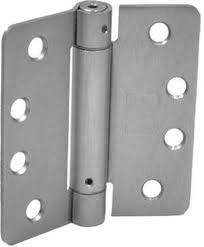 The door from the garage into the house is supposed to be self-closing. Problems occur with these doors as they seem to either slam closed or don’t close hard enough to latch.
The door from the garage into the house is supposed to be self-closing. Problems occur with these doors as they seem to either slam closed or don’t close hard enough to latch.
The fix is in the hinges and possibly even the weather stripping. Depending on the weight of your door, you will either have a self-closing hinge at one location or two locations. You can adjust them for more tension or less.
If the door is slamming, ease back on the tension. You can stick an Allen wrench in the top of the hinge. Some hinges require you to push down on the hinge to release all of the tension and then retension the hinge by turning the wrench. You will hear a “clicking” sound as you do this. Other hinges require you to turn the wrench and pull out the pin, gently ease back on the tension and then reset the pin in a hole to hold the tension.
You might also look at the weather stripping. It may be that it is so dense and stiff that it doesn’t allow the door to latch and instead bumps it back open. So sometimes you get a repetitive banging noise. So you can also try to replace it with a less dense weather stripping.
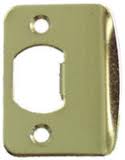 A door strike plate is the curved piece of metal that the door button contacts and latches into. If you have a door strike plate that is loose or too tight, you can repair it so that it does its job.
A door strike plate is the curved piece of metal that the door button contacts and latches into. If you have a door strike plate that is loose or too tight, you can repair it so that it does its job.
If the door latch is loose, use a screwdriver and tighten it. If the screws don't tighten it, use longer screws so that they contact new wood or even contact the framing behind the jamb.
If the door strike is too tight, it is likely that it was placed on the outside of the jamb without mortising it to be flush with the jamb. You can trace around the strike plate with a pencil and then remove the plate. Use a hammer and chisel and remove some wood inside the trace line. You want to remove only enough wood so that the strike plate sits flush with the surface of the jamb. This will be a pattern of removing wood, test the fit and repeat. Once you have the surfaces flush, you can screw the strike plate to the jamb.
If the door doesn't latch in the strike plate, it may be that the gap between the door and the jamb is too great. It's not likely that you can make up the distance with shims behind the strike plate, rather you will have to move the jamb. This is more involved as you need to remove the door molding and goose out the jamb. You can add shims in between the jamb and framing and nail through the entire surface, then reinstall the moldings.
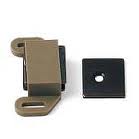 Cabinet Doors can take a lot of abuse. Not only do they get slammed, but kids like to use them as a seat and even a ladder to get to the countertop. Is it any wonder that they occasionally need a little TLC?
Cabinet Doors can take a lot of abuse. Not only do they get slammed, but kids like to use them as a seat and even a ladder to get to the countertop. Is it any wonder that they occasionally need a little TLC?
Sometimes you can take care of the door by making adjustments to the hinges. It may be that the screws holding the hinges to the stiles have elongated the hole and now the hinge has some play in it. If this is the case, remove the screws and use some glue and toothpicks or a golf tee and repair the hole. Let the glue dry, cut off the tee or toothpicks flush with the surface, and reinstall the screw. If you use the golf tee, you probably want to pre-drill a hole for the screw.
As a last resort, you can install a cabinet catch. This is a two-part mechanism that catches and holds the door to the frame. The most common ones use a magnet that mounts to the door’s frame and the other part mounts to the cabinet opening frame. When the cabinet door closes the two mating parts connect and the door holds firmly to the cabinet. They install with a couple of screws and will take just a few minutes to complete. Just remember to pre-drill the holes.
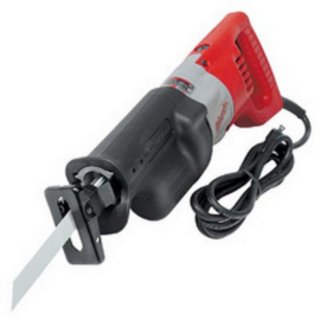 When replacing a door, sometimes you can get away with just a slab door, and sometimes you have to replace the door and frame (pre-hung door). Installing a pre-hung is great, but you first have to cut out the old frame of the old door.
When replacing a door, sometimes you can get away with just a slab door, and sometimes you have to replace the door and frame (pre-hung door). Installing a pre-hung is great, but you first have to cut out the old frame of the old door.
Removing an old door frame takes a little patience. Before you can bulldoze through the frame, take care with the molding. You will need to remove the interior and exterior molding that covers a portion of the frame. Cut through any caulking where the trim meets the reveal of the door jamb and where the trim meets the wall. Once you have cut through this, gently pry up a portion of the trim. If you are replacing the trim you don’t have to be as gentle, but if you are reusing it, start lifting up a portion and gently move down the trim until it is lifted from the surface. A standard screwdriver is good to begin the prying process. Do the same for the exterior of the door frame. You want to avoid splitting or breaking the trim. If you break a section of it, you will have to find the same profile or replace all of the trim with something of your choosing.
When you have all of the trim removed, use a reciprocating saw and run a demolition blade just behind the door jamb. The blade will easily cut through the nails, etc. With the old frame removed you can begin installing the door pre-hung door.
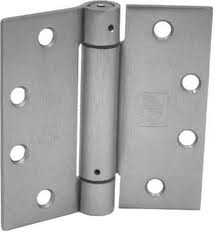 A garage entry fire door needs to have self closing hinges. It is likely that there are already self closing hinges on the door, but it may be that the spring has sprung (meaning it doesn’t self close anymore). Fortunately, these are not difficult to replace.
A garage entry fire door needs to have self closing hinges. It is likely that there are already self closing hinges on the door, but it may be that the spring has sprung (meaning it doesn’t self close anymore). Fortunately, these are not difficult to replace.
When you buy new self closing hinges, you will need to buy the right size to fit into the existing mortise at the edge of the door. They are usually 3 ½” or 4” tall, but they get larger for bigger doors. Buy the right size and you won’t have much work to do. You may need to chisel out the corners if you buy hinges that have 90-degree corners and are replacing hinges that have rounded corners. You usually only need to install a self closing hinge at the top and bottom hinge positions.
Once the hinges are installed, you need to set the torque to close them. There are two different styles for this. Once style uses a ratcheting method. Stick an allen wrench into the top of the hinge and simply turn it. You will hear the “click click click” of the ratcheting mechanism applying torque to the hinge. You want enough torque to close and latch the door, but not so much that it slams and knocks the pictures off of the wall. To release the torque push the allen wrench down into the hinge.
The other style uses a pin to hold the torque. Again, stick an allen wrench into the top of the hinge and turn it. Place the pin into the holes and it holds the torque. Repeat this until you have the right amount of torque.
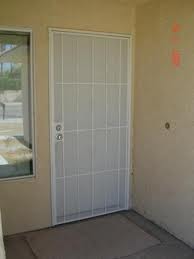 There are certainly times when you would want to remove a security door. Maybe it makes the house look like a jail, or that you just want to replace it. Either way, you will need to remove the one-way screws that hold it in place.
There are certainly times when you would want to remove a security door. Maybe it makes the house look like a jail, or that you just want to replace it. Either way, you will need to remove the one-way screws that hold it in place.
The door is held in place with one-way screws. These are unique in that you can tighten them, but can’t loosen them. Once you remove the screws, the door will come off.
To remove the screws takes a little patience. The fastest way is with power tools. If there is a gap between the house and the frame of the door, you can stick a reciprocating saw blade in there and cut through the bolt.
You can also cut a groove on the top of the screw head. This is best done with a small hand grinder. Grind a slot in the top of the bolt’s head and then you can use a large screwdriver and back it out.
You might also consider cutting off the sides of the round bolt head so that you can use a wrench to unscrew it. Cut parallel on each side and unscrew it.
If you don’t have a grinder, you can use a hack saw to cut the sides off of the bolt head. To cut a slot in the top of the bolt head, hold two hacksaw blades together and cut it.
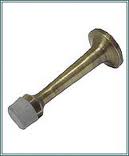 Door stoppers occasionally get damaged. I had a customer ask if they can be repaired. You can attempt to repair them, but they are inexpensive and it might just be easier to replace them.
Door stoppers occasionally get damaged. I had a customer ask if they can be repaired. You can attempt to repair them, but they are inexpensive and it might just be easier to replace them.
There are several different styles of door stoppers. The solid stoppers just screw into either the baseboard or the door itself. There really isn’t any repairing these. They are very tough, and if something gets damaged, it will be either the baseboard or the door itself. In fact, most repairs come from someone stepping on top of these door stoppers and it pulls downward and out of the baseboard. So at that point you can either patch the baseboard and remount the door stopper to the door instead, or just move it over somewhat.
The spring style door stoppers are flexible and don’t pull out of the baseboard. They slide into a base that is screwed into the baseboard. Sometimes, the spring shape gets damaged and when you thread it back into the base it doesn’t contact the door anymore. You can try to recoil the door stopper with needle nose pliers or just cut off the damaged part and rethread it into the base. Otherwise, spend a dollar and buy a new one.
 If you need to replace a door in your house and you buy a replacement at a home center, you will have to mortise the hinges. The mortise will allow the hinge to lay flush with the edge of the door.
If you need to replace a door in your house and you buy a replacement at a home center, you will have to mortise the hinges. The mortise will allow the hinge to lay flush with the edge of the door.
You may also need to rip about ¼” from the width of the door before you cut the mortise. So measure carefully.
After you mark out the locations of the hinges, you have a choice between routing out the mortises or cutting them by hand. You can buy a jig that will easily cut the mortises after you set it up, but if you don’t plan on doing many, it’s just as easy to cut them by hand. All you need is a hammer and a chisel.
Cut the perimeter with light taps to the chisel with the bevel facing toward the waste area. Then you can lay the chisel down and tap out the interior of the mortise. Hold the chisel with the bevel facing toward the door and the flat surface facing upward. Hold it between 30-45 degrees and use light taps with the hammer. The more vertical the chisel, the more aggressive the cut, meaning the more material you will remove.
Periodically place the hinge into the mortise to make sure you don’t remove too much or too little material. When the hinge lays flat and the surface is flush, you are done.
 Sliding closet doors move sid-to-side via a track. They either hang from a track mounted to the header or the roll on a track mounted to the floor.
Sliding closet doors move sid-to-side via a track. They either hang from a track mounted to the header or the roll on a track mounted to the floor.
I recently came across a large opening with three sliding closet doors to enclose the opening. These doors rolled along a bottom track and they were a bit cockeyed. When you closed the doors so that they contacted the side jamb, the top of the door would touch the wall, but at the bottom of the door there was a large gap.
It's a simple fix really, with just a few turns of a screw that adjusts the height of the rollers. By adjusting the rollers, you can raise or lower each side of the door as there are two rollers per door, one on each side.
The fix for this door is to raise the roller on the side closest to the wall or lower the roller on the side furthest away from the wall.
This is all done with a phillips head scerwdriver. At the roller assembly is a screw that sits on top. Turning the screw clockwise raises the wheels and vice-versa. Adjust the wheels in small increments and check the fit to the door. You want the door to contact the wall uniformly down the edge.
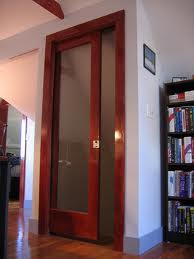 Pocket doors are not easy. They will save you approximately nine square feet of space, but making adjustments or repairing them will drive you crazy. The problem is that the hardware is tucked away at the top of the jamb. The act of adjusting the door isn’t tough, but getting to the hardware is.
Pocket doors are not easy. They will save you approximately nine square feet of space, but making adjustments or repairing them will drive you crazy. The problem is that the hardware is tucked away at the top of the jamb. The act of adjusting the door isn’t tough, but getting to the hardware is.
Pocket doors use a split jamb so the door can recede into the wall. The door hangs from rollers that roll along a track secured to the head jamb. There are lots of different designs, but it is pretty likely you will need to remove trim pieces around the door to get access to the hardware. You should only have to remove trim pieces from one side of the door, but choosing which side might prove difficult. Close the door and see if you can determine how the hardware comes off that connects the door to the rollers. Some hardware has an opening on one side that allows you to remove the door. Other hardware allows you to tilt and lift the door.
Start removing the side and top trim pieces carefully. Cut through the caulking and then gently goose the trim away from the door. You will need enough space to get access to the hardware at the top of the door. You may need enough clearance to completely remove the door, and if so snoop around to see if more trim comes out. You can also remove the front hardware and shimmy the door out of the opening.
Some hardware adjusts with a special tool that never seems to be around when you need it, and others use an open ended wrench. Generally, you can adjust the hardware up or down with a wrench. If the door is dragging, you may need to adjust the hardware so that it raises the door, or it may be that the screws holding the hardware to the door have pulled out.